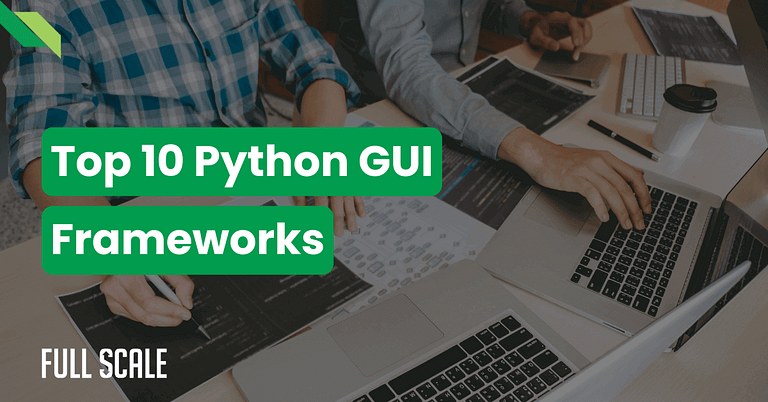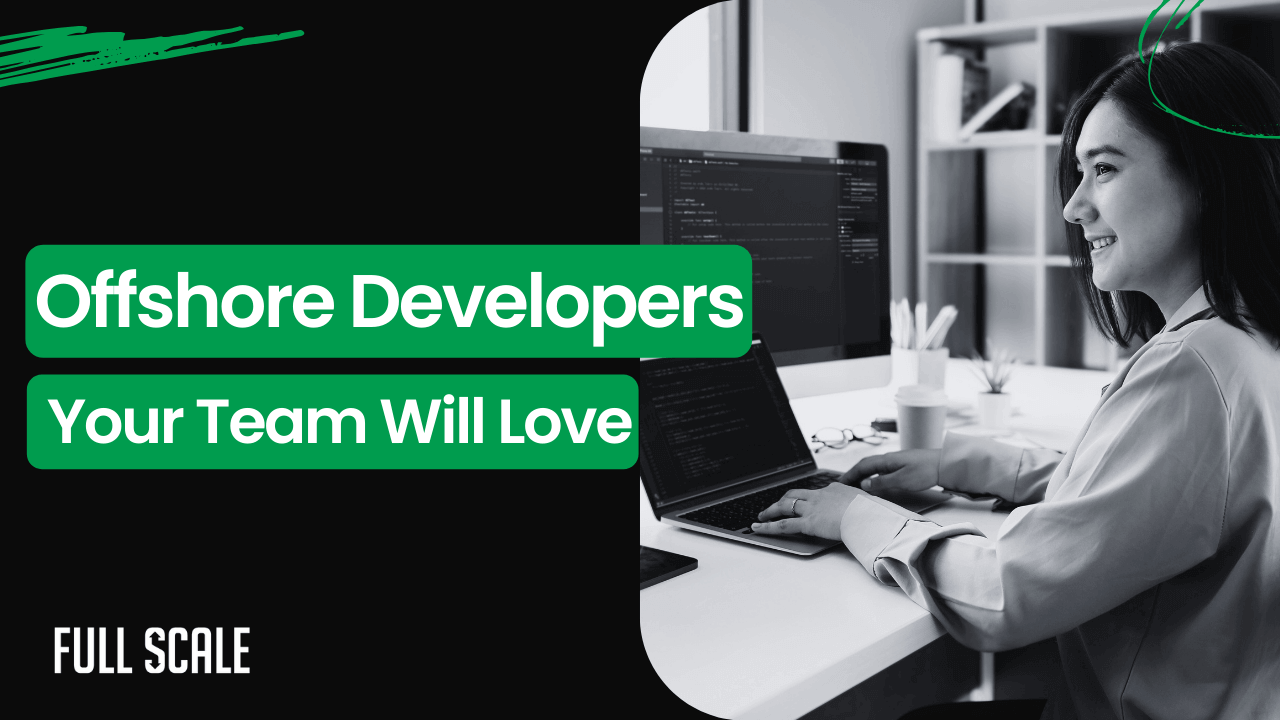Last Updated on 2024-10-11
Python’s versatility extends far beyond web development and data science. It’s a powerhouse for creating desktop applications with stunning graphical user interfaces (GUIs).
In 2024, Python GUI frameworks have evolved, offering developers more options than ever to build robust, user-friendly applications.
The landscape of desktop application development is changing rapidly. With the rise of cross-platform technologies, developers seek tools to create applications that run seamlessly on multiple operating systems.
Python, with its rich ecosystem of GUI frameworks, stands at the forefront of this revolution.
As we delve into Python GUI frameworks, we’ll explore how these powerful tools can simplify your desktop app development process.
Whether you’re a seasoned developer or just starting your journey, understanding each framework’s strengths and weaknesses will help you make informed decisions for your projects.
Why Is Choosing the Right GUI Framework for Python Important?
Selecting the appropriate GUI framework can make or break your project. It impacts development speed, application performance, and user experience. The right framework aligns with your project requirements and team expertise.
Recent statistics highlight the growing importance of GUI frameworks. According to a 2023 JetBrains survey, 38% of Python developers use it for desktop application development, up from 33% in 2022. This trend underscores the need for developers to stay informed about the latest GUI framework options.
As we move forward, we’ll explore the factors to consider when choosing a Python GUI framework. This knowledge will serve as a foundation for understanding the strengths and weaknesses of the top 10 frameworks we’ll discuss later.
Things to Consider When Choosing a Python Graphical User Interface
Before diving into the top frameworks, you should consider these factors first.
Learning Curve
Some frameworks are beginner-friendly, while others require more expertise. When choosing, assess your team’s skill level and project timeline.
Cross-Platform Compatibility
Ensure the framework supports your target platforms. Cross-platform compatibility reduces development time and maintenance costs significantly.
Performance
GUI responsiveness is crucial for user satisfaction. For optimal results, choose a framework that balances feature richness with performance.
Community Support
A vibrant community means better documentation, more third-party libraries, and easier problem-solving. Consider this when selecting your framework.
Licensing
Be aware of licensing requirements, especially for commercial projects. Some frameworks have restrictions that could impact your project’s viability.
Top 10 Python GUI Packages and Libraries
Let’s dive into the best Python GUI frameworks for 2024:
1. PyQt
PyQt is a comprehensive framework offering extensive features and customization options.
Key Features:
- Rich set of UI elements
- Cross-platform support
- Integration with Qt Designer for visual layout creation
Pros:
- Mature and well-documented
- Suitable for complex applications
Cons:
- Steep learning curve
- Commercial license is required for some use cases
PyQt’s robustness makes it a top choice for large-scale applications. However, its complexity might be overwhelming for beginners. Let’s look at a more accessible option next.
2. Tkinter
Tkinter comes bundled with Python, making it the most accessible option for beginners.
Key Features:
- Simple and lightweight
- Native look and feel on different platforms
- Easy to learn for Python beginners
Pros:
- No additional installation required
- Suitable for small to medium-sized applications
Cons:
- Limited widget set compared to modern frameworks
- Less aesthetically pleasing by default
While Tkinter is great for beginners, those looking for more modern interfaces might prefer our next framework.
3. Kivy
Kivy is perfect for creating multi-touch applications with a modern look.
Key Features:
- Multi-touch support
- Custom UI elements
- Cross-platform, including mobile devices
Pros:
- Excellent for touch-based and mobile applications
- Highly customizable appearance
Cons:
- Non-native look and feel
- Larger application size due to bundled dependencies
Kivy’s focus on modern, touch-based interfaces sets it apart. But if you’re aiming for a more native look, our next framework might be more suitable.
4. wxPython
wxPython provides a native look and feel across different platforms.
Key Features:
- Native widgets on each platform
- Extensive widget set
- Good documentation and community support
Pros:
- Applications look and feel native on each OS
- Suitable for large-scale applications
Cons:
- Can be complex for beginners
- Less suitable for custom-styled applications
wxPython’s native look is a significant advantage. However, if you’re looking for something similar to PyQt but with different licensing, consider our next option.
5. PySide
PySide is Qt’s official Python binding, offering similar capabilities to PyQt.
Key Features:
- Comprehensive Qt feature set
- Cross-platform support
- Integration with Qt tools
Pros:
- LGPL license, suitable for commercial use
- Similar to PyQt, easing transition
Cons:
- Slightly less mature than PyQt
- Smaller community compared to PyQt
PySide’s licensing makes it attractive for commercial projects. For those working in Linux environments, our next framework might be of interest.
6. PyGObject (GTK)
PyGObject allows the use of GTK, the toolkit behind GNOME desktop environment.
Key Features:
- Access to GTK widgets
- Good integration with GNOME environment
- Cross-platform, but best on Linux
Pros:
- Native look on GNOME-based systems
- Large widget set
Cons:
- Less popular on Windows and macOS
- Steeper learning curve for non-Linux developers
While PyGObject shines on Linux, developers seeking high platform performance might prefer our next option.
7. Dear PyGui
Dear PyGui is a newer framework focusing on performance and simplicity.
Key Features:
- Fast rendering using GPU
- Simple API
- Cross-platform support
Pros:
- Excellent performance in data visualization
- Easy to learn and use
Cons:
- Limited widget set compared to mature frameworks
- Newer, with a smaller community
Dear PyGui’s performance is impressive, but those looking for rapid development might find our next framework more suitable.
8. PySimpleGUI
PySimpleGUI simplifies GUI creation by wrapping other frameworks like Tkinter and Qt.
Key Features:
- Simple, Python-focused syntax
- Multiple backend options (Tkinter, Qt, WxPython)
- Quick prototyping capabilities
Pros:
- Rapid development for simple applications
- Easy for beginners
Cons:
- Limited customization compared to direct framework use
- May not be suitable for complex applications
PySimpleGUI’s ease of use is a big plus. However, for those aiming for truly native interfaces across platforms, including mobile, our next option is worth considering.
9. Toga
Toga aims to provide a native UI toolkit for Python.
Key Features:
- Native widgets on each platform
- Part of the BeeWare suite of tools
- Cross-platform, including mobile
Pros:
- True native look and feel
- Potential for mobile app development
Cons:
- Still in active development
- Smaller widget set compared to mature frameworks
Toga’s promise of native interfaces is exciting but still maturing. Our final framework might be the perfect fit for those who love Tkinter but want a more modern look.
10. CustomTkinter
CustomTkinter is a modern-looking extension of Tkinter.
Key Features:
- Modern, customizable widgets
- Built on top of Tkinter
- Light and dark mode support
Pros:
- Combines Tkinter’s simplicity with modern aesthetics
- Easy transition for Tkinter users
Cons:
- Limited to Tkinter’s core functionality
- Newer, with a growing but smaller community
CustomTkinter offers a fresh take on the classic Tkinter, rounding out our list of top Python GUI frameworks for 2024.
Now that we’ve explored each framework in detail, let’s compare them to help you make an informed decision.
Comparison Summary of Python GUI Frameworks
To help you quickly compare these frameworks, we’ve compiled their key characteristics into a handy table:
| Framework | Learning Curve | Cross-Platform | Performance | Community Support | Best For |
| PyQt | High | Excellent | Good | Large | Complex applications |
| Tkinter | Low | Good | Moderate | Large | Beginners, simple apps |
| Kivy | Moderate | Excellent | Good | Medium | Touch-based applications |
| wxPython | Moderate | Excellent | Good | Medium | Native-looking apps |
| PySide | High | Excellent | Good | Medium | Commercial applications |
| PyGObject | High | Good | Good | Medium | Linux desktop apps |
| Dear PyGui | Low | Good | Excellent | Small | Performance-critical apps |
| PySimpleGUI | Low | Good | Moderate | Medium | Rapid prototyping |
| Toga | Moderate | Excellent | Good | Small | Native mobile & desktop |
| CustomTkinter | Low | Good | Moderate | Growing | Modern Tkinter apps |
This table provides a quick overview of each framework’s strengths. When making your choice, consider your project requirements and team expertise.
Now that we’ve explored the top Python GUI frameworks, you might wonder how to leverage these tools for your projects best. This is where offshore Python development can play a crucial role.
Leveraging Offshore Talent for Python GUI Development
Offshore Python development offers a powerful solution for businesses looking to create robust GUI applications while managing costs and accessing a global talent pool. Let’s explore why this approach is gaining traction and how Full Scale can help you navigate this landscape.
The Benefits of Offshore Python Development
- Access to a Global Talent Pool: Offshore development opens doors to a vast array of skilled Python developers worldwide. This is particularly valuable given the growing demand for GUI development expertise.
- Cost-Effective Development Solutions: According to a 2023 Deloitte survey, 70% of companies consider cost reduction as a primary driver for offshoring. Python’s popularity in offshore markets ensures competitive pricing without compromising quality.
- 24/7 Development Cycle: With teams in different time zones, you can achieve round-the-clock development, potentially accelerating your project timeline.
- Scalability and Flexibility: Offshore teams can be quickly scaled up or down based on project needs, providing flexibility that’s often challenging with in-house teams.
- Focus on Core Competencies: By offshoring GUI development, your in-house team can focus on core business functions and innovation.
Offshore Python development, when done right, can significantly enhance your GUI application development process. But to truly harness its power, you need a reliable partner. This is where Full Scale comes in.
Why Choose Full Scale?
Full Scale stands out as an excellent choice for offshore Python development:
- Rigorous Developer Vetting Process: We ensure that only top-tier Python developers experienced in GUI frameworks join our team. Our comprehensive screening process includes technical assessments, communication skills evaluation, and background checks.
- Expertise in Python and Various GUI Frameworks: Our developers are well-versed in all the frameworks we’ve discussed, allowing you to choose the best fit for your project without worrying about skill gaps.
- Agile Development Methodologies: We employ Agile practices to ensure flexible, iterative development that adapts to your changing needs.
- Seamless Integration with Your Existing Team: Our developers are trained to work as an extension of your team, ensuring smooth collaboration and communication.
- Dedicated Project Managers: Each project is assigned a dedicated manager who oversees progress, manages resources, and serves as your primary point of contact.
- Quality Assurance and Testing: We have robust QA processes to ensure your GUI application meets the highest standards of functionality and user experience.
Full Scale Python Development Services
At Full Scale, we offer a comprehensive suite of Python development services tailored to meet your specific needs. Our services include:
- Custom Python Application Development: We create bespoke Python applications, including desktop GUI applications, web applications, and more.
- Python Web Development: Leveraging frameworks like Django and Flask, we build robust and scalable web applications.
- Data Science and Machine Learning: Our team develops data-driven solutions, including predictive models, data visualization, and analytics tools.
- API Development and Integration: We create RESTful APIs and integrate third-party services seamlessly into your Python applications.
- Python Testing and Quality Assurance: Our rigorous testing processes ensure your Python applications are bug-free and perform optimally.
- Python Application Maintenance and Support: We provide ongoing support and updates for your Python applications post-launch.
- Python Consulting Services: Our experts offer guidance on best practices, architecture decisions, and technology selection for your Python projects.
- Python Migration and Upgrades: We help modernize legacy systems by migrating them to the latest Python versions and frameworks.
- DevOps and Deployment: Our team assists with setting up CI/CD pipelines and deploying Python applications to various environments.
- Performance Optimization: We fine-tune your Python applications for speed, efficiency, and scalability.
Our Python developers are well-versed in various libraries and frameworks, including those used for GUI development. Whether you’re building a desktop application, a web service, or a data analysis tool, Full Scale has the expertise to bring your project to life.
Python GUI frameworks offer powerful tools for creating desktop applications. Whether you choose PyQt for complex projects, Tkinter for simplicity, or any other framework we’ve discussed, the key is matching the tool to your specific needs.
Ready to take your Python GUI development to the next level? Full Scale is here to help. Our team of expert Python developers can help you choose the right framework and build robust, user-friendly desktop applications.
Don’t let talent shortages or budget constraints hold back your project. Contact Full Scale today, and let’s bring your GUI application to life!
Book Your Discover Call Today
FAQs
What is the easiest Python GUI library?
Tkinter is generally considered the easiest Python GUI library due to its simplicity and inclusion in Python’s standard library. For a more modern look with similar ease of use, PySimpleGUI is an excellent choice.
Which Python GUI is best for desktop applications?
PyQt and wxPython are often considered the best for complex desktop applications due to their comprehensive feature sets and cross-platform capabilities. However, the best choice depends on your specific requirements and expertise.
Which is better: Kivy or PyQt?
Kivy excels in multi-touch and mobile applications, while PyQt is better for traditional desktop applications. PyQt offers a more native look and feel, while Kivy provides more flexibility in UI design. Choose based on your application type and target platforms.
Is Python good for GUI design?
Yes, Python is excellent for GUI design. Its simplicity, extensive library ecosystem, and powerful GUI frameworks make it ideal for creating desktop applications. Python’s readability and ease of use allow for rapid prototyping and development of GUI applications.

Matt Watson is a serial tech entrepreneur who has started four companies and had a nine-figure exit. He was the founder and CTO of VinSolutions, the #1 CRM software used in today’s automotive industry. He has over twenty years of experience working as a tech CTO and building cutting-edge SaaS solutions.
As the CEO of Full Scale, he has helped over 100 tech companies build their software services and development teams. Full Scale specializes in helping tech companies grow by augmenting their in-house teams with software development talent from the Philippines.
Matt hosts Startup Hustle, a top podcast about entrepreneurship with over 6 million downloads. He has a wealth of knowledge about startups and business from his personal experience and from interviewing hundreds of other entrepreneurs.





